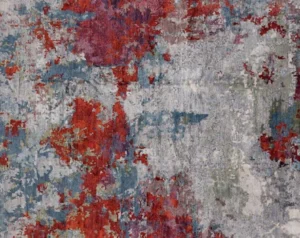A Beginner’s Guide to Understanding Gabbeh Rug Patterns and Designs
A Gabbeh rug is known for their thick, luxurious pile and natural colors derived from plant-based dyes. These rugs are hand-knotted and woven using high-quality wool.
These rugs also feature captivating symbols that carry deep cultural significance and meaning. Discover the secrets behind these symbols and find a rug that will bring warmth, charm, and depth to your home.
Patterns
Gabbeh rugs are made by hand and encapsulate the spirit of nomadic tribes. They often feature asymmetrical distributions of symbols all over their surface that evoke a rich storytelling tradition from ancient times.
They also show a lot of improvisational creativity, as their weavers don’t follow a pattern or map. That is what makes Gabbeh rugs unique and one-of-a-kind works of art.
The intrinsic irregularities of Gabbehs play well with decor that incorporates natural elements, such as indoor plants, woven baskets, and raw metal furniture. Similarly, their vivid hues pair with earthy tones and warm wood furniture to foster your home’s inviting, comfortable atmosphere.
Colors
 The colors in Gabbeh rugs are hot and often come from natural dyes. These are woven from local sheep and goat wool, using vegetable dyes. They evoke the nomadic heritage of the tribes from whom they originated.
The colors in Gabbeh rugs are hot and often come from natural dyes. These are woven from local sheep and goat wool, using vegetable dyes. They evoke the nomadic heritage of the tribes from whom they originated.
The weavers give free rein to their creative imagination during the weaving process. It has resulted in various motifs and figures representing nature or people. These include trees, flowers, animals, and birds. The figures often tell a story or recreate a scenario.
Gabbehs also have patterns with different shades of a single color. It gives them a unique look that can be mesmerizing.
The motifs in Gabbehs are also often elementary and geometric. That makes them ideal for modern homes. The brindled motif is one of the most popular patterns, which resembles barley and wheat fields. The seasons influence the colors, and the pattern depicts how the fields change.
Motifs
Gabbeh rugs often have a variety of symbolic motifs. Most common motifs include animals, plants, and geometric patterns. These motifs reflect the weavers’ cultural and natural surroundings, contributing to their unique design elements.
The weaver uses figures and symbols to convey their emotions or narrate a story. These motifs are also the result of their creativity and imagination. They may even incorporate materials like tinsel or fluorescent articles into their designs.
The most popular motifs in Gabbeh rugs are lions, sheep, and camels. These motifs are woven into the rug using various techniques, including drawing them with a needle or painting them with color. These motifs are a reminder of the nomad tribes’ heritage, and they bring this culture into your home. In addition, these rugs are beautiful accent pieces that complement any room in the house.
Symbols
The woven symbols and figures in Gabbeh rugs convey the weaver’s emotions, narrate a story, or recreate a scene. They may also signify animals, plants, and landscapes. This intrinsically personal and unsystematic design process makes each rug unique.
The rich, vibrant colors of Gabbeh rugs result from natural vegetable dyes extracted from plants such as madder root, indigo, and walnut husks. These dyes are colorfast, meaning the colors will not bleed or fade over time.
Traditionally, nomadic tribes wove Gabbeh rugs using wool from their herds. The wool is characterized by its thick, rich texture and resilient nature. Its high lanolin content, which means sheep grazed at higher altitudes, contributes to Gabbeh carpets’ distinctive sheen and softness. It also offers a more excellent resistance to staining and is more supple than other types of wool used in weaving.



6 Comments
Tamra Phelps
I would love a good, colorful rug for my bedroom. I’ll check these out.
heather
This was an interesting post to read and I learned a few new things. I so love rugs.
Wanda B
I think these rugs are so beautiful and unique.
MICHAEL A LAW
Thanks for sharing this
Tamra Phelps
I don’t know a thing about the patterns, etc., but they are really beautiful. And they look like a good, quality rug, too.
Terri Quick
Thank you for sharing